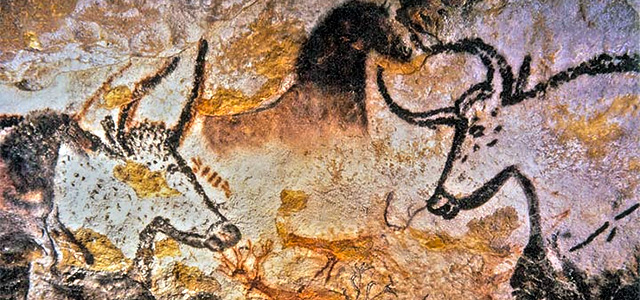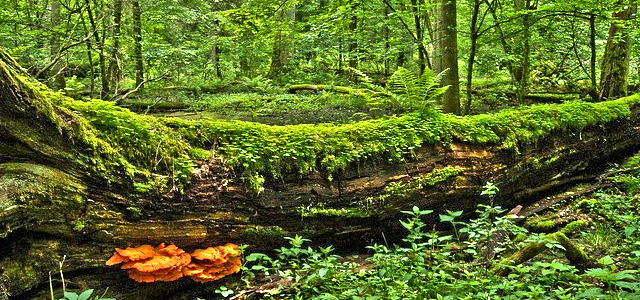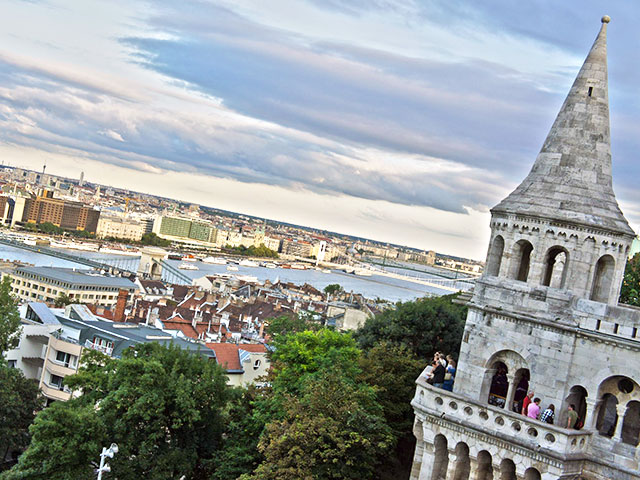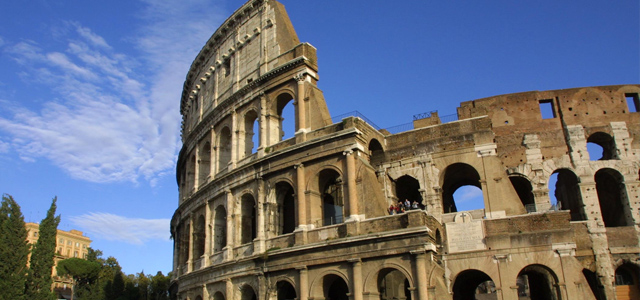
Rome: A city of majestic structures
One of the birthplaces of western civilizations, the mention of Rome instantly conjures up images of grand churches, majestic fountains and ancient ruins.
This 11th most-visited city in the world offers a travel experience that covers art, culture and history. And let’s not forget the holy Vatican City that sits right in the heart of Rome.
Colesseum

Sightseeing in this Eternal City should be a well planned affair. There are after all, a thousand and one places to visit, and where better to begin your Rome journey than its most famous historical site- the magnificent Roman Colosseum.
From a distance, the sight of this glorious structure is arresting. Up close, you can see that this massive structure has been battered from the harshness of nature through the years. Even then, this architecture marvel is testament to Italian architectural greatness. Known as “Flavian Amphiteater” in ancient times, the Colosseum was known to host about 450 years of gladiatorial combats, along with wild beast hunts. You may have a pretty good idea of what the Colesseum is all about by walking its perimeter, but do venture inside; you’ll slip right into the days of gladiator fights.
Tip: you can go to the different levels of seating area, and on the higher levels, you are able catch great shots of the nearby attractions.
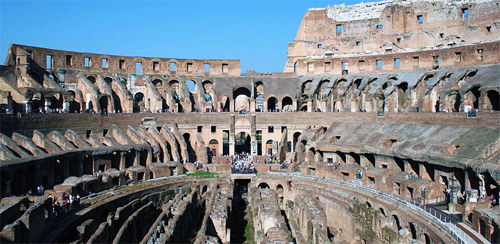
If you go beneath the arena, you’ll find yourself staring at an intricate underground network of tunnels and cages to hold the gladiators and animals before the combats begin. Try to get here earlier in the morning, crowds descend from noon onwards, and with them, pickpockets emerge.
Tip: Get to the Colosseum as early as possible. Lines get very long. If you get a Roma Pass (available at the Termini Station) you can skip the lines. If you’ve never been to the Colosseum, get a tour guide as very little is marked and you’ll get a better understanding of the site if you are with a historian.
Roman Forum
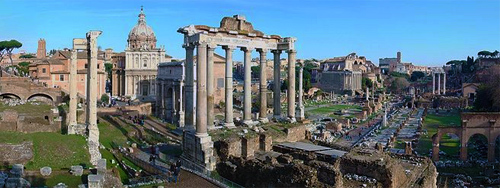
Continue your journey of ancient ruins just nearby with the Roman Forum, one of Rome’s famous monuments, and the one-time downtown area of the ancient city. This was where business, trading and commerce once took place. 2, 000 over years later, only a handful of buildings remain, and are in various states of ruins. What’s left of the Roman Forum may be scant, but enough to summon visions of grandeur during its hey-day.
This is where you can locate the significant monuments of Rome- Basilica Julia, Arch of Titus, the Temple of Jupiter, Baislica Aemilia, and more. You definitely need a bit more time to explore the Roman Forum and marvel at its architecture, or what’s left of it. This is not an area that you just pop in and out.
Tip: To get a full picture of the Roman Forum, you can grab a cheap flip-book to see what the place looked like during its prime. Also, avoid going during midday, there is no shelter at the ruins to shield the sun.
Palatine Hills
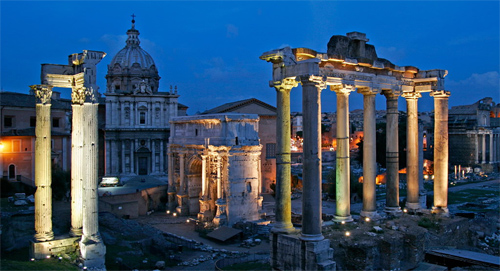
Another nearby ruins is the Palatine Hills, one of the most ancient parts of Rome and the centremost hills of the Seven Hills of Rome. It was said that affluent Romans of the Republican period (c.509 BC – 44 BC) had set roots here. The Seven Hills once form the geographical heart of Rome, within the ancient city walls.
It stands 40 meters above the Roman Forum, and although the climb is not very tedious, it’s best to wear comfortable shoes. Once up here, you have a good view over the Roman Forum on one side, and the Circus Maximus on the other. Beyond both, you can a landscape view of Rome. If you’re an artist or avid photographer, you can’t get more inspired than this. If you love the great outdoors, the Palatine Hills is perfect for a picnic.
Tip: You can buy the admission tickets to the Colosseum and the Forum here, because the line is always short, instead of joining the long queues at the Colosseum.
Spanish Steps
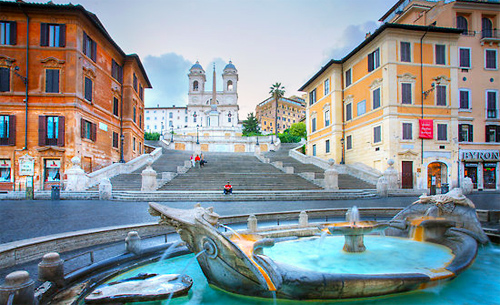
If the place looks familiar, it’s because you’ve seen it in Roman Holiday, where Audrey Hepburn glided down the steps with Gregory Peck in tow. The Spahish Steps is a monumental stairway that leads from the church Trinita dei Monti at the top to the Piazza di Spagna at the bottom. Made up of 138 steps, this widest staircase in Europe opened for use in 1725, providing Roman folks an attractive walkway to the church. Today, the Steps are flooded with people vying for a comfortable spot in the shade to rest and people watch.
You can also fine the Barcaccia Fountain (Fountain of the old boat) at the bottom of the steps. And in the piazza, at the corner on the right, as you begin to climb the steps, is once the house of English poet John Keats, who died in 1821. The place has since been transformed into a museum dedicated to his memory, full of memorabilia of the English Romantic generation.
Tip: While you are busy climbing or going down the steps, be mindful of pickpockets, who are known to flood the high traffic area.
Trevi Fountain
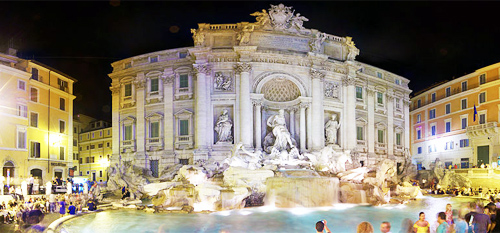
The largest and no doubt, the grandest in Rome, the Trevi Fountain is one of the most beautiful structures in Rome and undoubtedly, the most famous fountain in the world.
In elaborate Baroque style, the fountain rests at the meeting point of three roads. It has been said that it’s lucky to throw coins over your right shoulder. One coin signifies that the thrower will return to the city, while two means that the thrower will find love in Rome. And if you throw in three coins, it’s to seal the deal. You will marry in Rome. Clearly, there must be many believers of this myth. Once you peep inside the fountain; countless sparkling coins form the backdrop of your reflection.
Tip: Visit the fountain once in the day and another at night, both paint a very different picture. The lights reflecting on the sculptures at night are simply breathtaking.
The Pantheon
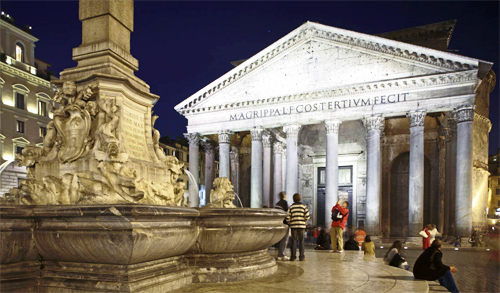
Appreciators of Roman architecture would have chills when visiting the Pantheon. The building’s exterior is large and looming, but the interior pure architectural miracle, with the hemispherical concrete dome pierced by a nine-meter oculus open to the skies above, for the sunrays to pierce rays of light to the vibrant colours on the marble that line the walls.
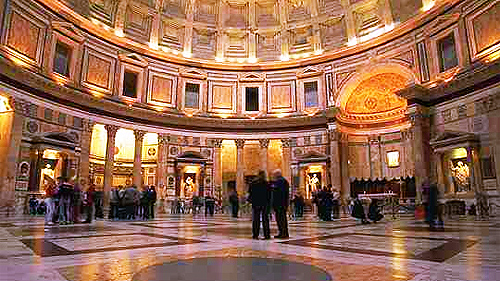
A tribute to Rome’s finest; the building was originally erected as a temple, but evolved to be a church in the 7th century. Today, the splendour and elegance of Rome is evident in the Pantheon, the only legacy of the Greco-Roman world that remained completely intact, almost 2,000 years after its construction.
Tip: Avoid dining at the restaurants outside the Pantheon, they are exorbitant and not worth the indulgence.
Art in Rome
The Borghese Gallery
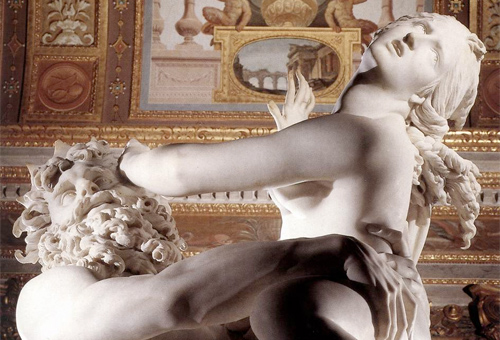
Some of the most significant Renaissance and Baroque paintings in the world are housed in The Borghese Gallery. The Gallery got its named by its founder, Cardinal Scipone Borghese, he nephew of Pope Paul V (reign 1605–1621).
The Gallery consists of twenty rooms across two floors. The main floor is largely devoted to classical antiquities of the 1st–3rd centuries AD (including a famous 320-30 AD mosaic of gladiators found on the Borghese estate at Torrenova), and classical and neo-classical sculpture such as the Venus Victrix.
The moment you enter the gallery, your eyes might not know where to focus. The gallery itself is a work of art, adorned with sculptures by Baroque and Neo-Classical sculptor Bernini, and elaborately styled mosaic-tiled floor. The trick is to focus on one type of art at a time. Start with the sculptures, then admire the paintings on the wall, followed by the intricate mosaic tile work under your feet.
You can admire up close Bernini’s stunning sculptures of “Pluto and Persephone,” “Apollo and Daphne”, “David” and others. Besides Benini, the gallery also features artwork by Veronese, Botticelli, Giorgione, Guercino, Giovanni Bellini, Domenichino and Rubens, among others.
Tip: The Borghese Gallery is extremely popular; it’s advisable to book your visit a few days in advance. You can book directly through the gallery itself at the Official Borghese Gallery site.
Castel Sant’ Angelo
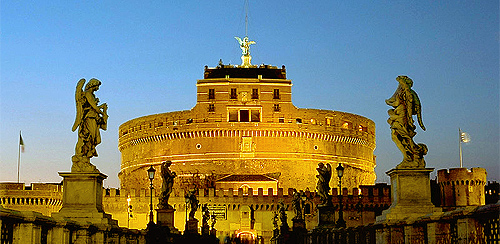
It was first erected to be a Mausoleum; it then became a fortress before being transformed into a castle. Now, the Castel Sant’ Angelo is a museum, where history buffs would have a field day learning about the past.
The structure itself paints an arresting picture, a hovering cylindrical building with a statue of an angel perched on top. The mausoleum began as the monument of Emperor Hadrian, before becoming a fortress in the middle ages. When the Renaissance age arrived, the fortress underwent a facelift to emerge a papal fortress. During the 6th century, underground passages were constructed to link the fortress to the Vatican palaces, under the advice of several popes. They felt strongly to have these secret routes in times of threat.
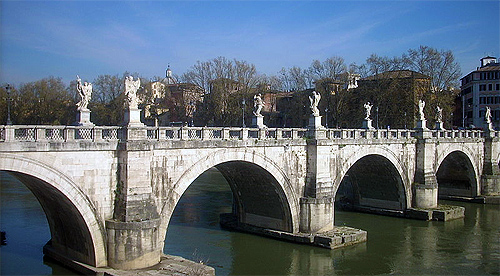
This “multi-purpose” building, at one point, even served as a prison. Today, the museum offers visitors in-depth information about its past. Don’t forget to cross the Ponte Sant’Angelo, the bridge which leads to the Castel Sant’Angelo. The bridge provides excellent photo opportunities.
Tip: If you want a good view of the vicinity, don’t forget to visit the top of the castle. There, you can sit at the restaurant for an ice cold beer on a hot afternoon and admire the view around you.
Capitoline Museums
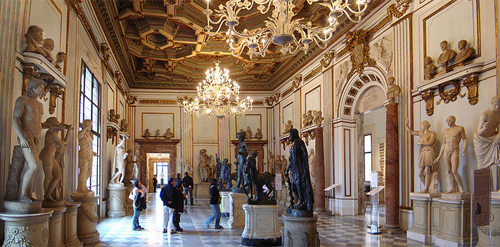
At the Capitoline Museums, which consists of two buildings, the Palazzo Nouvo and the Palazzo dei, be treated to an impressive array of sculptures. The history of the museums can be traced to 1471, when Pope Sixtus IV donated a collection of important ancient bronzes to Rome and placed them on Capitoline Hill.
The Palazzo Nouvo houses mainly Roman sculptures, whereas the Palazzo dei is more varied, with ancient sculptures as well as Renaissance and Baroque art. There are also a large number of ancient Roman statues, inscriptions, and other artifacts; a collection of medieval and Renaissance art; and collections of jewels, coins, and other items.
The highlight of the museum is the enormous bronze sculpture of Marcus Aurelius on his horse (the real one is inside the museum; the one in the piazza is a copy).
Complesso del Vittoriano
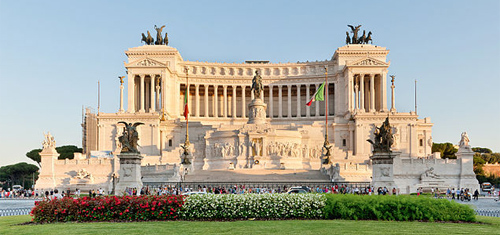
If you’re a deep fan of the art, then there’s a place where you should definitely visit, be it for grand art exhibitions or a small art display- the Complesso del Vittoriano. Located at the Piazza Venezia, the Complesso del Vittoriano is an important museum, where it has played host to some of the largest touring exhibitions of art in Europe. The place has several halls, and while one is usually reserved for housing an important exhibition, the other is more for minor exhibitions, which are generally free of charge. If you visit Rome at the right time, you might just find yourself attending one of the most lavish art exhibitions in the world.
The Vatican City

Anyone visiting Rome should never miss visiting The Vatican, which has been acting as an independent state in 1929, leading a separate existence from Italy, despite the fact that it’s surrounded by Rome on all sides.
It’s the smallest independent state in the world and is also the home of the Pope. The Vatican forms the territory of the Holy See, the highest authority of the Roman Catholic Church. The Vatican may be small, but it’s bursting with riches, with its astounding collection of priceless art treasures. The Vatican is practically an art gallery itself. Some of the must-sees in the Vatican are the Sistine Chapel and the St. Peter’s Bascilica.
The Vatican’s main attractions observe a strict dress code; it’s forbidden to show bare legs and shoulders. Do keep this in mind when you visit to avoid the disappointment of being turned away.
Saint Peter’s Basilica
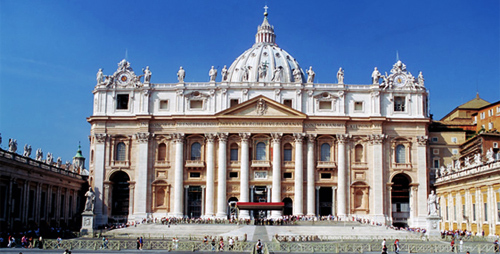
Even if you’re not the religious kind, St Peter still has the power to draw you right in. Stunning both inside and out, the building is a marriage of both art and architecture.
A Late Renaissance church located within the Vatican City, Saint Peter’s Basilica holds claim to having the largest interior of any Christian church in the world.
Once you enter the Basilica, be sure to see the Michelangelo’s Pieta, a masterpiece of Renaissance sculpture by Michelangelo, located on the far right.
The basilica’s dome is the world’s largest, 42m in diameter and138 meter in height. Its interior, which includes 45 altars, is decorated by famous artists. Some of the most important works in the church, apart from the Pieta, are the papal altar by Bernini, the Throne of St. Peter – also by Bernini – and the Monument to the Stuarts by Canova. Be warned that a pretty strict dress code is enforced when you visit, but there’s no admission fee.
You can visit the dome with a small entrance fee. You can choose to take the elevator or the stairs, with the latter being the cheaper option. However, the stairs are somewhat claustrophobic and if you find yourself unable to go on, there is no turning back option. The good thing is that there are a number of rest stops before reaching the top, for you to catch your breath and admire the beauty around you.
It may be over 300 steps to the top, but when you’re up there, you’ll have a magnificent panoramic view of the city.
Food in Rome
Food and drinks are in abundance in Rome, with restaurants dotted everywhere. Italian food is an important element of Italians’ lifestyle, reflecting on their culture and history.
If you’re traveling on a tight schedule, you can grab a meal at an Alimentari, which is a grocery shop and deli. In these places, you’ll be able to grab a decent Italian sandwich, freshly made, with Italian meats and cheeses.
If you have more time and decide to indulge, then there’s nowhere better to have a decent meal than at a restaurant, where you’ll be served a full Italian meal. The prices here may be a little on the steep side, but it would be very satisfying, complete with the right ambience. Usually, restaurants offer a selection of appetizers (antipastri), pasta dishes (promo piatti), meat or fish (secondi piatti) and also, side dishes (contorni). Of course, the Italians love their wine, so don’t be too surprised if the waiter asks you what kind of wine you’d prefer. The areas of San Lorenzo and Trastevere offer delicious home cooking that are reasonably priced.
If you do not wish to spend that much on food, then there are pizzerias where you can chow down true blue Italian Pizza. Compared to restaurants, most of the pizzerias are sparse in their décor, but the delicious pizzas make up for the lack of ambience.
Wine lovers who like to enjoy a glass or two before or after dinner will find Rome to be a wine paradise. There are traditional enoteche (wine sellers), like Il Goccetto and La Vineria, that offer a fine selection of vintage wines.
After a day of traveling and a fine dinner, unwind by hitting the nightclubs in Rome. The hippest place around town is found in the Testaccio stretch, where nightclubs are abound. One of the more frequented places is Villaggio Globale, a former slaughterhouse that now offers some awesome live acts from time to time. If you’re not in the mood for that, hop on right to a trendy club nearby, Akab-Cave, for some chilling out.
With such a rich background, it’s no wonder that Rome, labeled the Eternal City, has become one of the most significant travel destinations of the world, with its archaeological heritage and its artistic landscape.
What’s the #1 hotel in Rome? Read reviews & find hotel deals on TripAdvisor!
